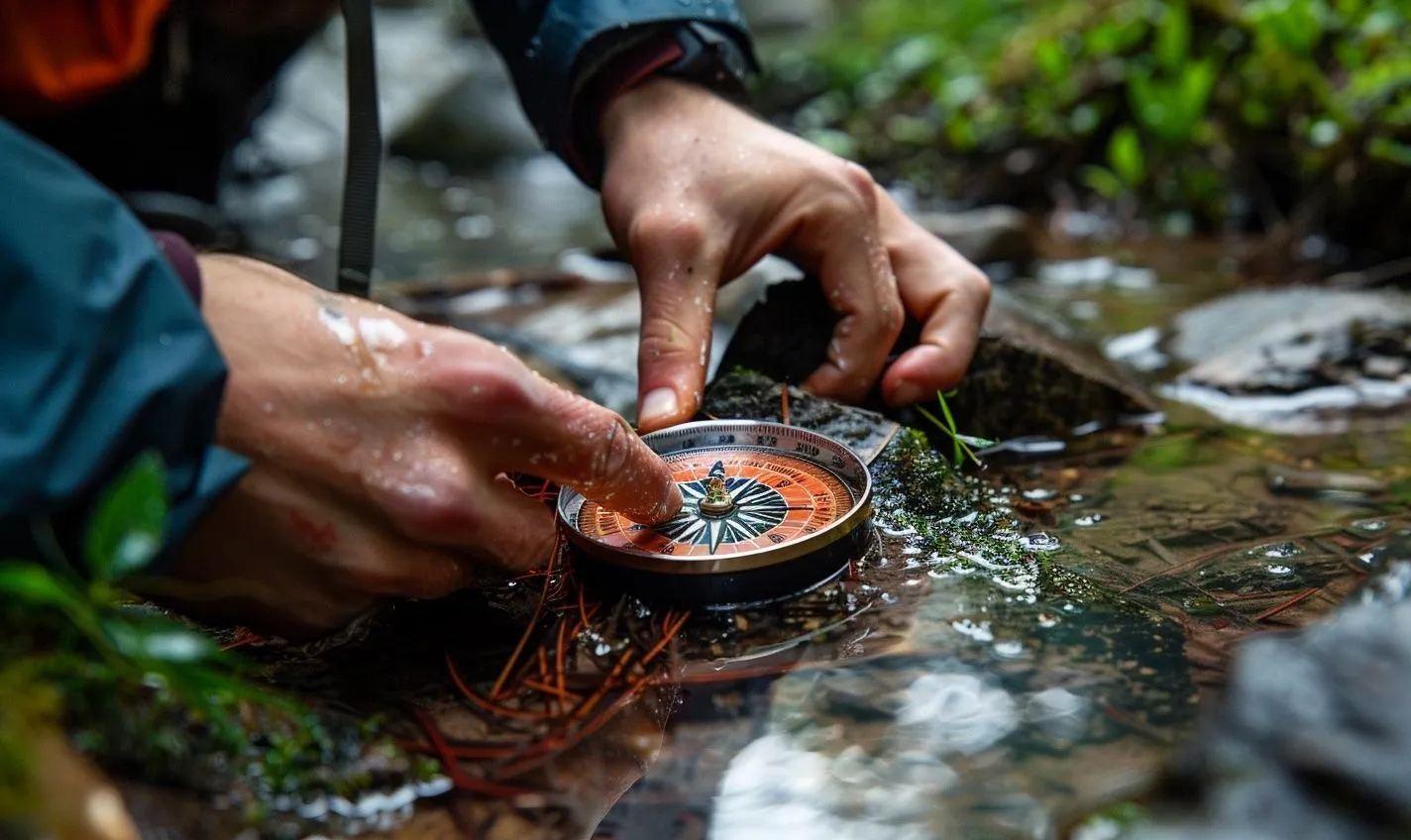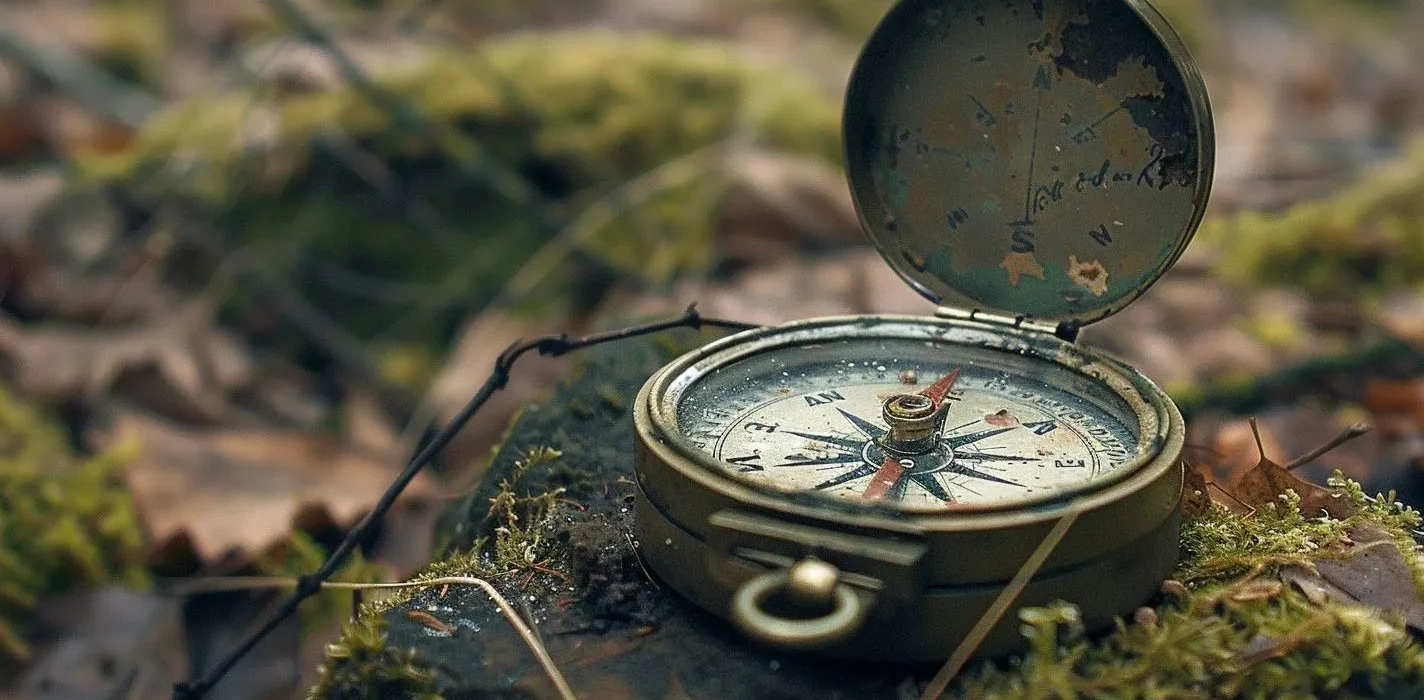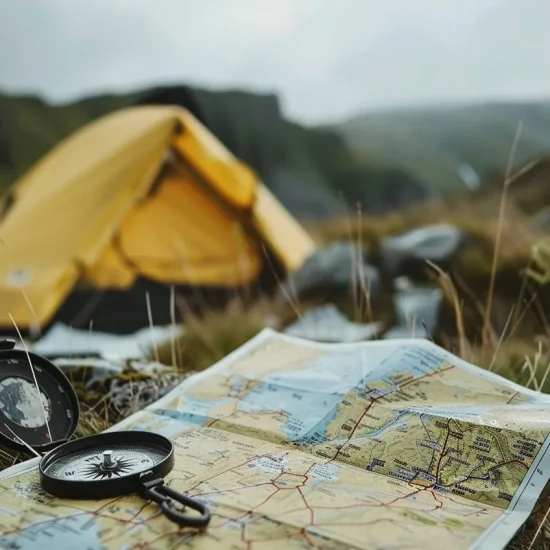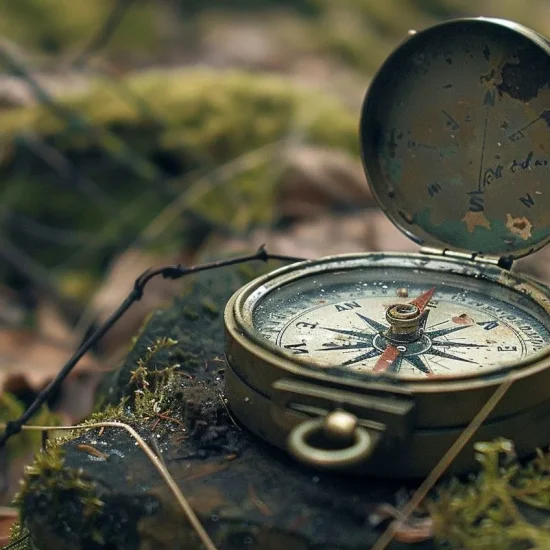Table Of Content
- Understanding Compass Navigation Basics
- Choosing the Right Compass for Your Needs
- Getting Familiar with the Parts of a Compass
- Calibrating Your Compass for Accuracy
- Orienting Your Map and Understanding Declination
- Using a Compass to Take a Bearing
- Choosing the Right Compass for Your Needs
- Understanding Compass Navigation Basics
- Getting Familiar with the Parts of a Compass
- Calibrating Your Compass for Accuracy
- Orienting Your Map and Understanding Declination
- Using a Compass to Take a Bearing
- Getting Familiar with the Parts of a Compass
- The Anatomy of a Compass
- Navigating with a Compass
- Calibrating Your Compass for Accuracy
- Step-by-Step Guide
- Why Is Calibrating Your Compass Important?
- Ensuring Accurate Navigation
- Orienting Your Map and Understanding Declination
- Orienting Your Map
- Understanding Declination
- Using a Compass to Take a Bearing
- Step 1: Set Up Your Compass
- Step 2: Identify Your Current Location and Destination
- Step 3: Take a Bearing
- Step 4: Follow the Bearing
- Following a Bearing and Walking a Straight Line
- Step 1: Establish Your Bearing
- Step 2: Pick a Landmark
- Step 3: Walk Consistently
- Step 4: Check Your Progress
- Step 5: Reach Your Destination
- Using Back Bearings for Backtracking
- Mastering the Art of Navigation
- How Back Bearings Work
- Step-by-Step Guide to Using Back Bearings
- Benefits of Using Back Bearings
- Additional Tips for Accurate Navigation
- Get a Feel for the Terrain
- Practice, Practice, Practice!
- Stay Calm and Patient
- Trust Your Instincts
- Frequently Asked Questions (FAQs)
- What is compass navigation?
- Why is using a compass essential for navigation?
- How do I use a compass for navigation?
- Can I navigate accurately with just a compass?
- What are the basic steps for compass navigation?
- How can I improve my compass navigation skills?
Welcome, fellow outdoor enthusiasts and adventurers! Today, we delve into the essential skill of compass navigation. Mastering a compass is about finding your way in the wilderness and unlocking a world of exploration and discovery with confidence and precision.
Compass navigation is an invaluable skill that can save lives, prevent you from getting lost, and empower you to explore the great outdoors with accuracy and assurance. In this step-by-step guide, we will unravel the mysteries of using a compass, equipping you with the knowledge and confidence to navigate any terrain successfully.
Whether you are a seasoned hiker, a camping enthusiast, or a beginner looking to enhance your outdoor skills, mastering compass navigation is a game-changer. Say goodbye to reliance on technology and embrace the timeless art of compass navigation to lead the way with precision and certainty.
Join me on this journey of discovery as we unlock the secrets of accurate navigation using a compass. Let’s embark on this adventure together and elevate our outdoor experiences to new heights!

Understanding Compass Navigation Basics
Basic camping skills are crucial for a safe and enjoyable experience when venturing into the great outdoors. One essential skill every camper should master is compass navigation. Using a compass confidently can mean the difference between getting lost and finding your way back to camp.
Choosing the Right Compass for Your Needs
Before embarking on your outdoor adventure, selecting the right compass for your needs is essential. Consider factors like size, features, and durability when choosing a compass to serve you well on your journey.
Getting Familiar with the Parts of a Compass
Take the time to get acquainted with the different parts of your compass. Understand how the baseplate, direction-of-travel arrow, and magnetic needle work together to provide accurate navigation guidance.
Calibrating Your Compass for Accuracy
- Find an open area away from any metal objects.
- Hold the compass level and steady.
- Rotate the bezel until the needle aligns with the orienting arrow.
Orienting Your Map and Understanding Declination
Orienting your map to match your compass is essential for accurate navigation. Additionally, understanding declination and how it influences your compass readings will help you navigate with precision.
Using a Compass to Take a Bearing
- Point your compass in the direction of your destination.
- Rotate the bezel until the orienting arrow aligns with the magnetic north arrow.
- Read the bearing at the index line on the bezel.
And remember, practice makes perfect! The more you use your compass, the more confident you’ll become in your navigation skills. So, grab your compass, head outdoors, and start exploring accurately and confidently!

Choosing the Right Compass for Your Needs
When venturing into the wilderness, having the right tools can make all the difference in ensuring a safe and successful adventure. Choosing the right compass for your needs is crucial for accurate navigation. Let’s dive into the specifics to guide you in making the best choice for your outdoor excursions.
Understanding Compass Navigation Basics
Before selecting a compass, it’s essential to understand the basics of compass navigation. A compass is a vital tool that helps you find your bearings and confidently navigate unfamiliar terrain.
Getting Familiar with the Parts of a Compass
Each compass consists of several parts, including the base plate, the housing with the direction-of-travel arrow, the magnetic needle, and the orienting arrow. Understanding these components is critical to using your compass effectively.
Calibrating Your Compass for Accuracy
Ensuring that your compass is calibrated correctly is paramount for accurate navigation. By adjusting for declination and ensuring that your compass is not affected by nearby metal objects, you can trust that your readings are precise.
Orienting Your Map and Understanding Declination
Orienting your map to match your compass is essential for accurate navigation. Understanding declination and how it impacts your bearings is crucial for successful map and compass navigation.
Using a Compass to Take a Bearing
Learning how to take a bearing with your compass is a fundamental skill for navigating in the outdoors. You can determine the precise route to your destination by aligning your compass with your desired direction.
Remember: A compass is like a trusty guide that points you in the right direction. Embrace its reliability and let it lead you through the winding paths of the great outdoors!

Getting Familiar with the Parts of a Compass
Have you ever held a compass in your hand and felt a wave of uncertainty wash over you? Fear not! Let’s break it down together and demystify this essential tool for accurate navigation in the great outdoors.
The Anatomy of a Compass
A compass may seem daunting initially, but it becomes a reliable companion on your adventures when you understand its parts. Here are the key components to look out for:
- Magnetic Needle: The floating needle that always points to magnetic north.
- Baseplate: The transparent base that holds the compass dial and features a direction-of-travel arrow.
- Bezel: The rotating ring with degree markings used to determine directions.
- Orienting Arrow: An arrow that you align with the magnetic needle for accurate readings.
- Index Line: The line on the baseplate is used in conjunction with the bezel for navigation.
Navigating with a Compass
Now that you know your compass inside out, it’s time to put it to good use. Follow these steps for accurate compass navigation every time:
- Hold the Compass Flat: Ensure the compass is level to allow the magnetic needle to move freely.
- Rotate Yourself: Turn your whole body, including the compass, until the needle aligns with the orienting arrow.
- Read the Bearing: Look at the degree marking on the bezel where it meets the index line for your direction.
- Follow Your Bearing: Keep the direction-of-travel arrow pointing straight ahead as you move forward.
Remember, a compass is like a trustworthy friend guiding you through unfamiliar terrain. With practice and understanding, you’ll soon navigate like a pro, feeling confident and empowered in the wilderness.

Calibrating Your Compass for Accuracy
Now that you’ve learned to use a compass and take accurate bearings, you must adequately calibrate your compass for precise navigation. Calibrating your compass is crucial to prevent errors and deviations in your readings. Let’s dive into the step-by-step guide to calibrate your compass effectively.
Step-by-Step Guide:
Calibrating your compass for accuracy involves a simple process that can significantly impact your navigation adventures. Follow these steps:
- Find an area without any large metal objects or magnetic interference.
- Hold your compass level in front of you and away from your body.
- Rotate the housing of your compass until the needle aligns with the orienting arrow.
- Now, adjust the declination, if needed, based on your location to ensure accurate readings.
- Check the floating needle to ensure it moves freely without any obstructions.
- Repeat the calibration process periodically to account for any changes in magnetic fields.
Why Is Calibrating Your Compass Important?
Imagine trying to navigate through a dense forest or a vast wilderness, only to realize that your compass is leading you astray due to incorrect calibration. Calibrating your compass ensures accurate navigation and instills confidence in finding your way back to safety.
Ensuring Accurate Navigation:
Properly calibrating your compass is akin to sharpening the blade of a knife before a delicate task. It sets the foundation for accurate navigation, allowing you to trust your equipment and focus on exploring the great outdoors without hesitation.
And remember, just like a well-tuned instrument enhances a musician’s performance, a calibrated compass enhances your navigation skills. So, take the time to calibrate your compass before each adventure, and embark on your journey with confidence and precision.

Orienting Your Map and Understanding Declination
So, you’ve got your compass in hand, ready to tackle the wilderness. But how do you ensure that you’re heading in the right direction? That’s where orienting your map and understanding declination come into play. Let’s break it down step-by-step.
Orienting Your Map:
Imagine your map is a window into the terrain you’re standing on. It’s like a snapshot of the world around you. Orienting your map to the landscape would be best to align this snapshot with the actual world.
- Place your map on a flat surface.
- Identify a prominent landmark in your surroundings.
- Rotate your map until the landmark on the map aligns with the landmark in front of you.
Understanding Declination:
Declination is like a secret code that helps you translate between magnetic north (where your compass points) and true north (the North Pole). If you overlook declination, your compass could lead you astray!
- Find the declination value for your location on the map legend or online.
- Adjust your compass by rotating the bezel to compensate for the declination.
- Ensure that the north arrow on your compass aligns with the actual north lines on your map.
By orienting your map and understanding declination, you set yourself up for accurate navigation through the wilderness. It’s like having a secret map that only you can decipher, guiding you to your destination.

Using a Compass to Take a Bearing
Now that you’ve mastered the basics of compass navigation, it’s time to delve into the practical aspect of using a compass to take a bearing. This skill is essential for accurate navigation while hiking, camping, or exploring the outdoors. Let’s dive into a step-by-step guide on how to use a compass effectively.
Step 1: Set Up Your Compass
Begin by laying your map flat and placing your compass on top. Ensure that the direction of the travel arrow on the compass is pointing toward the top of the map.
And align the orienting lines on the baseplate of the compass with the north-south grid lines on the map.
Step 2: Identify Your Current Location and Destination
Locate your current position on the map and identify your destination. Determine the direction you must travel toward your destination by drawing an imaginary line between the two points.
Step 3: Take a Bearing
Hold the compass flat in front of you and turn the housing dial until the orienting arrow aligns with the north indicator on the compass housing.
And rotate the entire compass, keeping the dial in place until the magnetic needle aligns with the orienting arrow.
Step 4: Follow the Bearing
Now that you have taken your bearing hold the compass in front of you with the direction of the travel arrow pointing away from your body. Ensure the needle stays aligned with the orienting arrow as you reach your destination.
And periodically check your compass to ensure you are staying on course.
Using a compass to take a bearing may seem daunting initially, but it will become second nature with practice. Remember, accurate navigation is critical to a successful outdoor adventure. So, grab your compass, embrace the unknown, and let your inner explorer guide the way!
Following a Bearing and Walking a Straight Line
So, you’ve mastered the basics of compass navigation and understand how to take a bearing. Now, it’s time to put that knowledge into practice and walk a straight line toward your destination. Let’s dive into a step-by-step guide to ensure accurate navigation using a compass.
Step 1: Establish Your Bearing
After determining your target direction with your compass, hold it steadily in front of you and align the direction of the travel arrow with the north needle. Ensure the compass housing hasn’t rotated.
Step 2: Pick a Landmark
Spot a distinct landmark, whether it’s a tree, rock formation, or any visible point in the distance that lies along your bearing. This will serve as your guiding point towards which to walk.
Step 3: Walk Consistently
Please keep your eyes on the chosen landmark and begin walking towards it. Take steady steps straight, maintaining a consistent pace and direction. Check your compass frequently.
- Remember to adjust your path as needed to stay on course.
- Trust your compass and the bearing you’ve taken to lead the way.
Step 4: Check Your Progress
Periodically glance back at your starting point to confirm that you are walking a straight line along the chosen bearing. This helps you correct any deviations and stay on track.
Step 5: Reach Your Destination
Continue walking towards your landmark until you reach your destination. Congratulations, you’ve successfully followed a bearing and walked a straight line using your compass!
Remember, practice makes perfect when it comes to compass navigation. Don’t be discouraged by minor errors—each attempt hones your skills and boosts your confidence in accurate navigation.
Like learning any new skill, mastering compass navigation takes patience and perseverance. Embrace the process, and soon, you’ll navigate the wilderness like a pro!



Using Back Bearings for Backtracking
So, you’ve been trekking through the wilderness, following your compass, and enjoying the great outdoors. But what happens when it’s time to find your way back to camp or your starting point? This is where using back bearings for backtracking becomes crucial.
Mastering the Art of Navigation
Navigation with a compass isn’t just about following a straight line to your destination. Sometimes, you need to retrace your steps, especially in unfamiliar terrain. Back bearings are your secret weapon for accurate navigation.
How Back Bearings Work
Think of back bearings as breadcrumbs leading you back to where you started. By taking a back bearing, you’re essentially determining the direction of your starting point from your current location. This reverse navigation technique is invaluable when retracing your route.
Step-by-Step Guide to Using Back Bearings
- Stop at a recognizable landmark or point.
- Hold your compass steady and take a bearing towards your starting point.
- Rotate the compass housing until the needle aligns with the north arrow.
- Read the back bearing from the compass.
- Now, follow this backbearing to retrace your path.
Benefits of Using Back Bearings
- Ensures you don’t get lost in unfamiliar terrain.
- It helps you backtrack accurately even in low visibility conditions.
- Provides confidence and peace of mind during outdoor adventures.
Remember, mastering compass navigation, including using back bearings, takes practice. So, next time you hit the trails, try sharpening your navigation skills with this valuable technique. Happy exploring!
Additional Tips for Accurate Navigation
Get a Feel for the Terrain
Before you set out on your journey, take a moment to look around and get a feel for the terrain. Understanding the lay of the land can help you anticipate any obstacles or challenges.
Practice, Practice, Practice!
Like any skill, compass navigation takes practice. The more you use your compass, the more comfortable and confident you will become in its effectiveness. Take every opportunity to practice using a compass in different environments and conditions.
Stay Calm and Patient
Accurate navigation requires patience and a calm mindset. Rushing can lead to mistakes, so take time to understand your bearings and adjust as needed. Remember, slow and steady wins the race!
Trust Your Instincts
While map and compass basics are essential, don’t be afraid to trust your instincts when navigating. Sometimes, your intuition can guide you in the right direction, especially when faced with unexpected challenges or deviations from your original plan.
And finally, always remember that compass navigation is a valuable skill that enhances outdoor adventures. With the right tools, knowledge, and mindset, you can confidently navigate and enjoy nature’s beauty to the fullest!
Conclusion
Mastering compass navigation is a vital skill for any outdoor enthusiast. It ensures accurate navigation even in the most remote locations. Following this step-by-step guide, you can confidently use a compass to find your way and easily explore new territories.
Remember, practice makes perfect when using a compass for navigation. Don’t be discouraged if you don’t get it right the first time – keep honing your skills through regular exercises.
With a solid understanding of map and compass basics, you can embark on thrilling adventures, knowing you can always find your way back. So, grab your compass, head into the great outdoors, and let the magnetic needle guide you on unforgettable journeys.
Equip yourself with the knowledge and tools needed for successful compass navigation, and embrace the freedom and independence of mastering this essential skill. Happy exploring!
Frequently Asked Questions (FAQs)
What is compass navigation?
Compass navigation uses a compass to determine direction and accurately navigate outdoors.
Why is using a compass essential for navigation?
A compass is a reliable tool without batteries or technology, making it essential for accurate navigation in remote areas.
How do I use a compass for navigation?
You can use a compass by aligning the compass needle with the north direction and following the desired azimuth or bearing.
Can I navigate accurately with just a compass?
Yes, with proper skills and knowledge, a compass alone can help you navigate accurately when combined with map reading skills.
What are the basic steps for compass navigation?
The basic steps include setting the map and compass, orienting the map, taking a bearing, walking to the destination, and adjusting for declination if needed.
How can I improve my compass navigation skills?
You can improve your skills by practicing in various terrains, taking orienteering courses, and learning about advanced compass techniques.












No Comment! Be the first one.